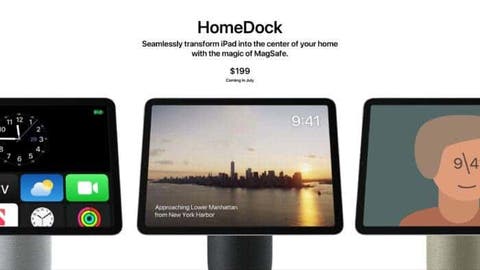Apple is working on a brand-new iPad accessory. The tablet will function as a control hub for the connected home with the help of this new dock. The accessory was in plans to go on sale sometime in 2019.
Mark Gurman, a journalist for Bloomberg, claims that Apple wants to make the iPad one of the key components of the connected home. The Californian company has been working to improve its home automation ecosystem for a number of years. In an effort to compete with Amazon and Google, the two market leaders.
With this in mind, Apple wants the iPad to take over as the go-to remote for connected household items like speakers, sockets, lightbulbs, and televisions.
Apple will turn the iPad into a smart display similar to the Nest Hub
To do this, Apple is developing a new dock that will enable the iPad to function as a connected screen. When the tablet is on this charging support, it will resemble a Google Nest Hub or an Echo Show.
The Google Pixel Tablet, the recently released Android tablet can be used to control all the devices in a home. It is obvious that the Pixel Tablet is simple to turn into a Nest Hub. The dock can be positioned in key areas of a family’s daily life. Such as the living room or the kitchen.
Additionally, the upcoming Apple accessory would offer a similar solution. Parker Ortolani, a writer for The Verge, created 3D renderings of the stand based on information from Mark Gurman. Although the majority of the components are the designer’s imagination, we learn what an iPad that transforms into a connected screen might look like.
The dock, dubbed HomeDock by Parker Ortolani, would support MagSafe and include an audio system. As soon as the iPad is on the stand, the iPadOS interface would change on its own. The user interface would be similar to that of Apple TV’s tvOS operating system in terms of simplicity.
Also, the Cupertino giant has not given up on its connected screen project for iOS. Which includes speakers and is Siri-compatible. Simply put, the iPad dock would provide an alternative to this gadget. “The idea is to offer something that users can place on a kitchen counter, in the living room or on their bedside table” explains Mark Gurman.
